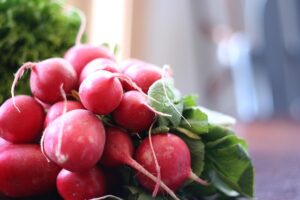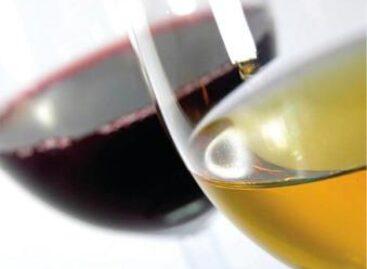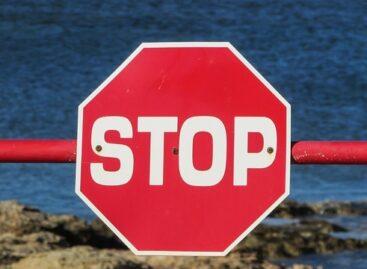Fresh and crunchy: Supermint grew month-old radishes at the Szarvas Plant Variety Experiment Station
The radish seeds tested in the Supermint spring product test were sown by experts from the National Food Chain Safety Office at the office’s Plant Variety Experiment Station in Szarvas. The development of the seeds was monitored until the month-old radishes were harvested. All seeds developed as expected, producing fruits corresponding to their packaging, which also had good results in the laboratory test of their folic acid, vitamin C and potassium content. The ranking became final after the blind tasting preference test.

(Photo: Pixabay)
In the Supermint spring comparative test, the experts tested 22 round, red, month-old radish seeds intended for small garden sowing, which met the criteria of the laboratory and official tests. However, during the visual inspection, the experts found insect contamination in one product. Due to the quality defect, the inspectors warned the distributor concerned and asked them to destroy the batch still in stock. In addition, the affected seed was excluded from the product test and therefore from the variety trial.
The seeds that passed the seed test were sown at the beginning of March with a row spacing of 20 cm and a plant spacing of 5 cm
Until the end of the harvest, the radishes grew under a film of burlap due to late frosts, evaporation of soil moisture by the wind, and protection against insect pests. In order to detect the appearance of possible pests, white and blue insect traps were placed, and a beer trap was placed against snails. The plants only needed to be watered twice, thanks to the rainfall arriving at the right rate and quantity. Soil loosening with a hoe and weeding were also carried out twice. The one-month radishes produced their fruits one by one by mid-April, which developed according to expectations. At harvest, it was clearly visible which ones were early and which were late-ripening. Overall, the seeds tested well, as each one produced the promised one-month radish.
In the Nébih laboratory, the experts measured the folate, vitamin C and potassium content of the fruits – with the exception of two late-ripening radishes
The one-month radishes contained an average of 14.45 μg/100g of folic acid, 9.4 mg/100g of vitamin C and 305.67 mg/100g of potassium. The recommended daily intake value for folic acid is 200 μg, 80 mg of vitamin C and 2000 mg of potassium (NNGYK), so in this respect the amounts measured in the fruits can be said to be low. However, based on the 200-400 mg/100g value determined by the FDA (U.S. Food and Drug Administration), they can be classified as high-potassium foods.
One of the most popular moments of product tests is the popularity test, which could not be missed in this case either
Expert and lay tasters scored the fruits and the final ranking was based on their evaluation. Cherry Belle (Garafarm) took the top spot on the podium, Óriás vaj (Gara Seed) took second place, and Escala (Gartenland) came in third place.
Nébih
Related news
Layers of problems
🎧 Hallgasd a cikket: Lejátszás Szünet Folytatás Leállítás Nyelv: Auto…
Read more >MDR 2000 Ltd. has recalled the 50 gram Mama Medicinal Plants Hibiscus Flower product.
🎧 Hallgasd a cikket: Lejátszás Szünet Folytatás Leállítás Nyelv: Auto…
Read more >EU Council approves changes to agricultural rules to boost competitiveness
🎧 Hallgasd a cikket: Lejátszás Szünet Folytatás Leállítás Nyelv: Auto…
Read more >Related news
How do young adults celebrate?
🎧 Hallgasd a cikket: Lejátszás Szünet Folytatás Leállítás Nyelv: Auto…
Read more >Vajda-Papír celebrates Ooops!’s 15th anniversary with a hybrid AI campaign
🎧 Hallgasd a cikket: Lejátszás Szünet Folytatás Leállítás Nyelv: Auto…
Read more >Pre-holiday shopping at up to half price
🎧 Hallgasd a cikket: Lejátszás Szünet Folytatás Leállítás Nyelv: Auto…
Read more >






